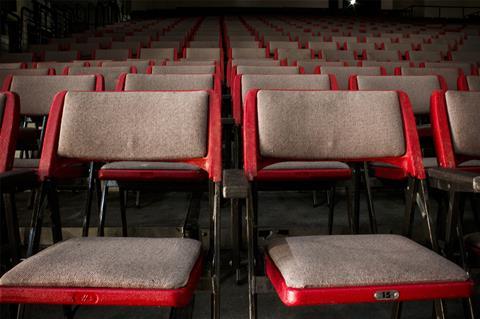
Speaking to Screen International last month, Francois Aymé, president of the French Association of Arthouse Cinemas, drew a pointed contrast between his own country and the UK. “I’m the president of an association representing 2,200 arthouse cinemas,” he said. “Such an association doesn’t exist in the UK.”
And the lack of such a body explains the UK’s weak participation in the International Confederation of Art Cinemas (CICAE), which is essentially a federation of associations from countries including France, Italy, Spain and Germany, collectively representing thousands of cinemas. From the UK, there are just two individual cinema members.
Practitioners in the UK independent exhibition sector may recall that, in the past, such bodies have existed, notably the Consortium of Media Exhibitors (COMEX) and the Association of Independent Film Exhibitors (AIFE). The latter body was in fact only would up in January 2015, according to records at Companies House, but it ceased to be active long before that date.
Screen spoke with independent exhibitors and other voices in the industry, and posed the question: why does the UK not have an independent cinemas association? Below are five possible reasons why the territory currently doesn’t have one.
1. The ICO exists
In 2003, the BFI shut down its programme unit – the body that gave programming advice to the UK’s regional film theatres. Catherine Des Forges, a programme adviser at the unit, believed passionately that it was providing an essential service to these venues, and successfully lobbied for BFI funding to help set up the Independent Cinema Office.
The ICO, which celebrates its 15th birthday with a London party on Wednesday (July 11), is now a firm fixture in the UK scene, offering professional training courses, providing advice to new venues, hosting screening days of upcoming titles, as well as offering programming advice to 18 venues including Watershed Bristol, Showroom Sheffield, Broadway Nottingham and Depot Lewes. The ICO currently has a staff of 17, a mix of full- and part-time.
The ICO feels it is best serving the sector in its current form, rather than evolving into a trade association. “We don’t want to feel hemmed in by having membership,” explains its head of cinemas David Sin. “We want to be open and inclusive, and many of our services are free to the user.”
2. The UK Cinema Association is open to all
According to Sin, at the time when COMEX existed, the Cinema Exhibitors Association, representing the multiplexes and other operators, was “more selective” about admitting mixed-arts venues into its ranks. Rebranded since 2015 as the UK Cinema Association (UKCA), the body is “much more inclusive now”, says Sin.
“We cover 94 to 95% of the market,” says UKCA CEO Phil Clapp. “Our membership is a very broad church, and we endeavour to – and I hope most people would say we do – represent each of these equally, recognising there are different business models and concerns, and different relationships with Government.
“When we talk to the public, media and Government, we need to reflect not just the economic, but also the cultural and social importance of cinema.”
Clapp adds that exhibitors with five or more sites automatically earn a place on the UKCA board, and that smaller operators have a voice at the six regional UKCA branches that meet every six months. “That’s very much an open forum for commercial operators and more specialised venues,” he says.
Clapp says that when he joined the association in 2007, only the branch covering the west and south-west “had any kind of life to it”. He adds, “In the last five or six years, we’ve breathed new life into some of the existing branches” and created new ones. “We are still on an upward curve with some of the branches.”
3. The Film Audience Network exists
The Film Audience Network (FAN) was set up in 2013 with support from the BFI, and currently comprises nine regional hubs. Each hub has a network of member exhibitors who can access support for training and audience development projects. Current annual support from the BFI is £3m.
FAN also organises an annual conference, This Way Up, where current issues are discussed, with opportunities for peer-to-peer learning and best-practice sharing. An annual get-together is precisely the kind of event a trade association of independent cinemas might provide, if it existed – but the provision of such an event is already in place.
Comments Mark Cosgrove, cinema curator at Watershed Bristol, “I think the FAN has been a success, in terms of what it delivers, and in terms of the BFI engaging in the nations and regions in a much more proactive and visible way. We have a much better dialogue, and we are seeing the benefits of that.”
4. BFI policy has evolved
Over the years, interest in the independent exhibition sector from the relevant government body – be it the UK Film Council (2000-2011) or the BFI – has waxed and waned. At the time of the setting up of AIFE in 2002, says the ICO’s Sin, “There was a feeling that there was no one at the UK Film Council who was especially understanding of or sympathetic to the independent film exhibition sector.”
In 2017, the BFI merged various funds supporting distribution, exhibition and film festivals into a single Audience Fund, which currently has an annual budget of £5.8m – and this is on top of the FAN support. Venues can apply for organisation support or project funding. Venues are encouraged to demonstrate how they are targeting more diverse and hard-to-reach audiences, including younger, rural, disabled and BAME communities. Says Audience Fund head Ben Luxford, “There is a very much an emerging positive picture of funding for exhibition in the UK. As long as your project is really thinking about those audiences, there are more opportunities to access funding than there ever have been.”
The exhibitors seem to agree – even ones that used to receive support automatically with grant-in-aid funding, and now have to apply to the Lottery. Comments Jason Wood, artistic director for film at HOME Manchester, “If you get funding, you have a responsibility to the funders, and you have a responsibility towards independent cinema. It is towards a general sense of diversity and access, and I think that’s very important. It is this idea of diversity, both in terms of race and economics.
“My attitude towards the BFI has actually changed quite a lot since I’ve been at HOME, and I can see what they’re trying to do and the steps they are taking. If that means a little bit more attentiveness, and making sure that what we are doing is tallying with the funding we receive, I don’t have a problem.”
5. A problem of definition
Were a UK association of independent exhibitors to exist, who would be included in it? “It’s very difficult to define what an independent exhibitor is in a very coherent way,” comments the ICO’s Sin.
Picturehouse, Everyman and Curzon have more than 60 venues between them, and are expanding rapidly. “If you set up a trade association now and used the word independent cinema in the title, or in the definition of the association, I think it would be problematic to include any of those chains,” says Sin. “And Picturehouse is part of Cineworld.”
Adds the UKCA’s Clapp, “There is more crossover between, inverted commas, ‘specialised’ venues in the UK and the mainstream than there is in other territories. The more specialised venues in the UK are hugely entrepreneurial. There’s more of a continuum of business models in the UK. There’s not a clear divide: you’re commercial and mainstream, and you’re specialised and independent. I think it’s much healthier.”
Despite all of the above, a trade association for independent cinemas could nevertheless emerge if it could grapple with a topic that is not being currently addressed by existing bodies: terms of business with distribution. For Watershed’s Cosgrove, there are great advantages to being independent, but there is also a disadvantage: “When it comes to navigating, negotiating, you are but one small thing. We know that bulk buying, bulk arguing, gives you a stronger voice.”
Adds Wood, “I recently went to an ICO event, which was a loose approximation of some of the AIFE discussions, and it was made very clear at the start that certain things couldn’t be discussed, and one of those was terms. If we are going to have an association, I think we should be transparent about terms, and what people are paying. If we are having these discussions and they’re not completely open and transparent, they’re flawed.”
And in case the BFI thinks there is now a surfeit of satisfaction in the independent exhibition sector, Cosgrove offers up a rallying cry for yet more vigour. “We’ve got a really good relationship [with the BFI]. We’ve got a really good set-up with FAN. This is great, it demonstrates it works, now spend more outside of London. It’s not an oppositional argument: this is working well, how can we ramp it up?”



































No comments yet